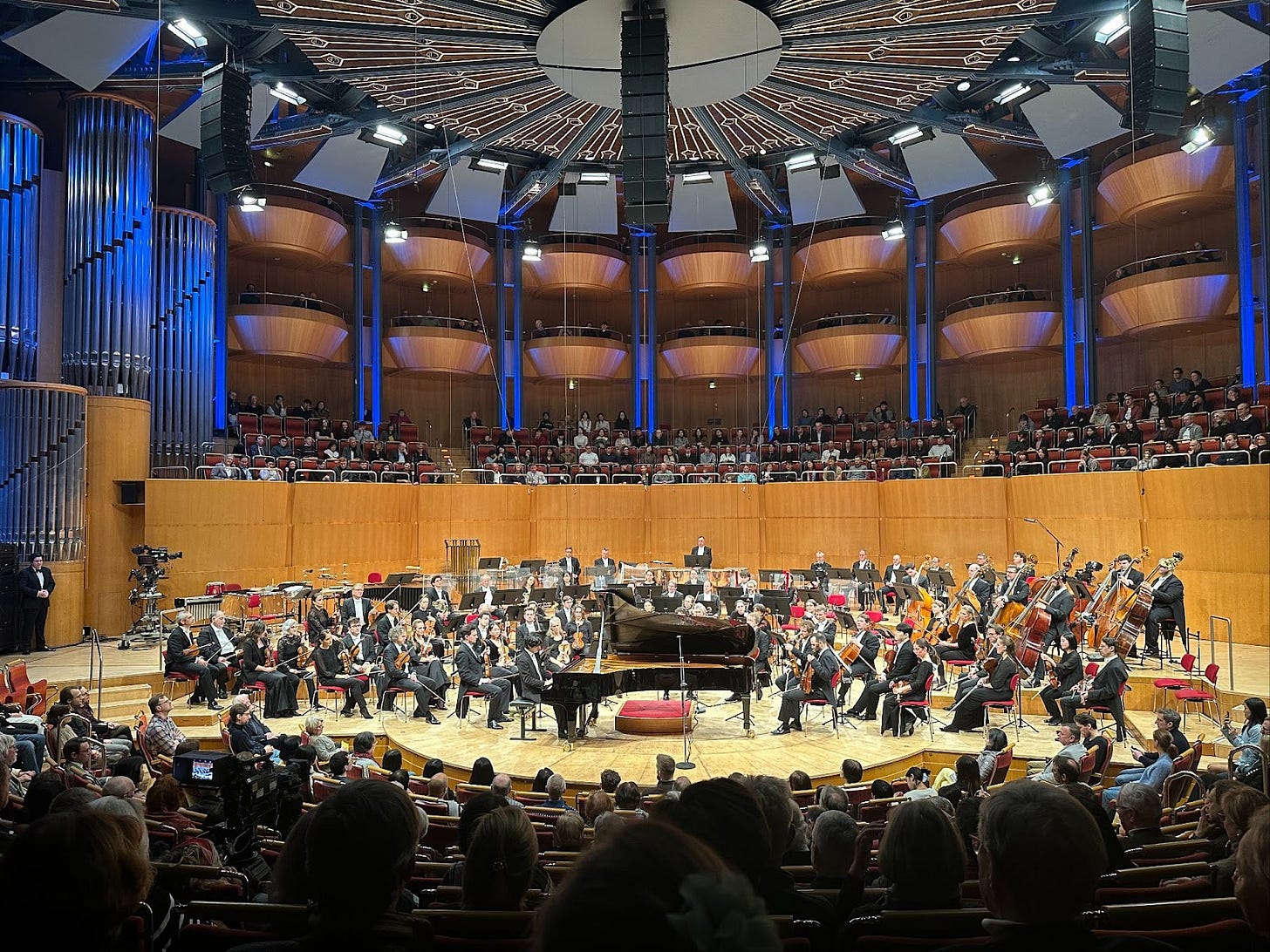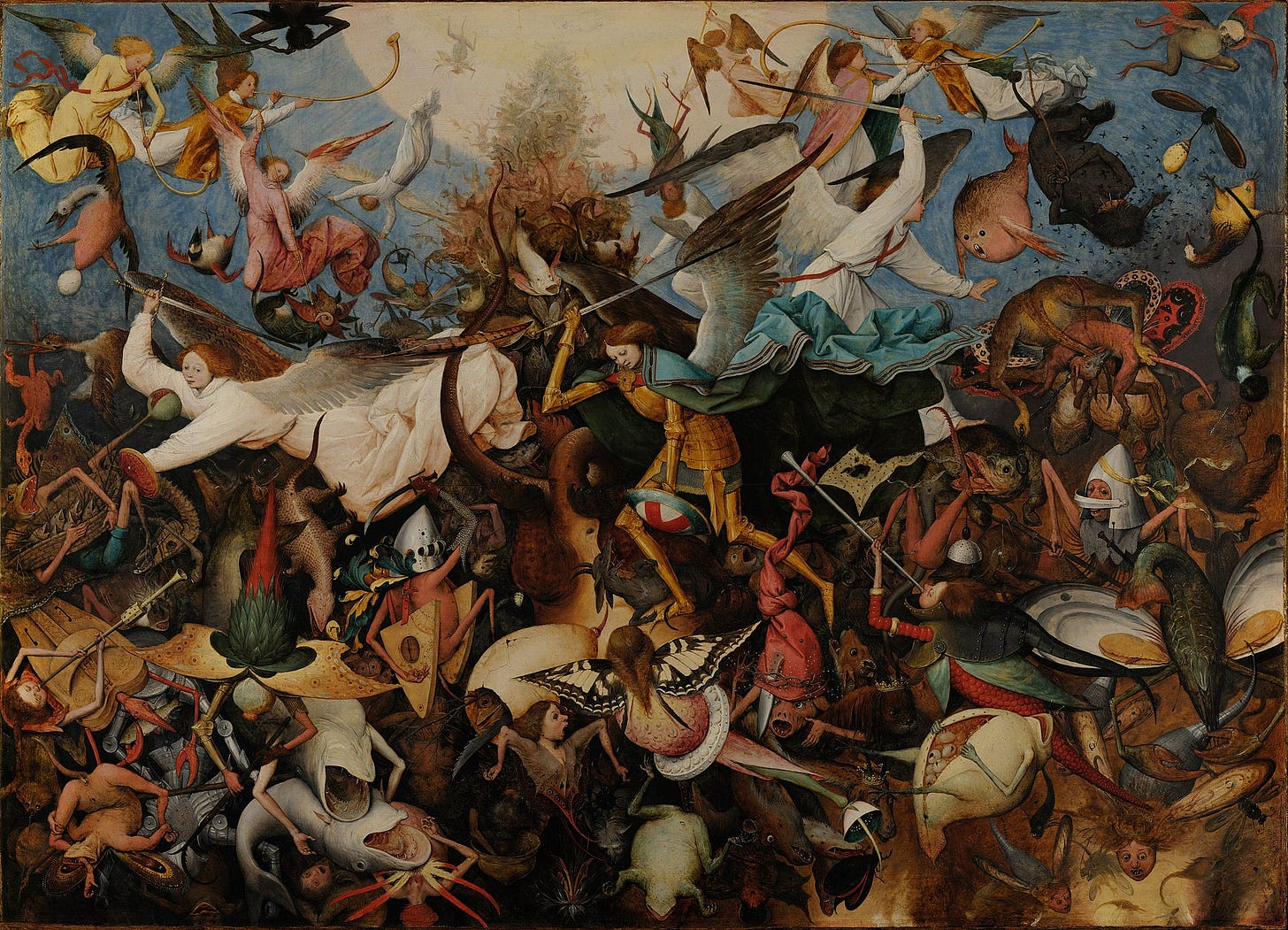The Untouched Sanctity of the Concert Hall
How Classical Music Remains a Final Stronghold of Artistic Integrity

The Classical Music Experience
In recent weeks, I had the honour of attending several live classical concerts—two at the magnificent Kölner Philharmonie. The experience is refreshingly simple: you arrive on time. Once the concert starts, the doors shut—no late entry, no interruptions. This tradition preserves the listening experience and respects the performers’ concentration. The audience is smartly dressed, as though attending a formal dinner. Drinks are only available outside the hall; inside, there is no food, drinks, or mobile reception.
As the start time approaches, the musicians enter in full white tie and tails, the most formal dress code. The audience claps politely, and when the conductor appears, applause swells and then—silence. The music begins, without speeches or explanations.
As the final note fades, the audience erupts into applause, and then it’s over. This experience exists to preserve and celebrate the purity of the art as it was created by the composer. In the concert hall, the music doesn’t require justification or reinterpretation; it is a direct conversation between the composer, the performers, and the audience—unchanged and uncompromised.
The concert hall is designed to honour the music, and silence becomes a shared act of reverence. There is no chatter or distractions—every listener is there to experience the music in its rawest form. The musicians, in formal attire, have spent decades mastering their craft. They reveal the composer’s vision rather than reinvent it.
While personal interpretation can exist—through a conductor’s phrasing or a soloist’s dynamic choices—it remains within the framework of the composition. Every decision reflects deep study and respect for the work. The conductor’s role is to shape the sound with precision—never to alter its essence. Each performance creates a living connection between the past and present, allowing the composer’s gift to resonate fully.
In the concert hall, the music stands on its own—powerful and timeless. The audience is trusted to experience it for themselves, uninterrupted.
Art Forms Under Siege: Theatre and Museums
To contrast this aesthetic experience, consider art museums, where the purity of the art has been tampered with by curators who believe it’s their duty to remind viewers just how “relevant” older art is. They assume the audience is too foolish to make that connection on their own. Worse still, they feel compelled to elevate so-called contemporary artists to the same level as the giants of previous centuries.
I cannot forget my visit to the Huntington Museum in California. Directly next to Gainsborough’s legendary The Blue Boy was a contemporary piece—a deliberate mockery of The Blue Boy. The placement disrupted the pristine experience Gainsborough intended, turning what should have been a moment of reverence into an awkward attempt at irony.
I still remember how disgusted I was. It ruined my encounter with The Blue Boy, turning awe into outrage at how the museum disrespected its own most prized possession. Mr. Huntington, who obtained the painting with such care and pride, would have turned in his grave had he known what they had done to it.
Many art museums and theatres have succumbed to a cynicism that prioritises commentary and clever juxtapositions over the preservation of the original works' power. What should be a sanctuary for timeless human drama is increasingly transformed into a platform for political statements, with the essence of classic plays often overshadowed by a director's agenda. Contemporary directors feel compelled to reinterpret great works of the past, diluting their timeless themes into mere provocations rather than presenting them as they were originally intended.
I haven’t seen it myself, but a well-known example is the 2017 production of Julius Caesar at the Public Theatre in New York. In this adaptation, Caesar was depicted as a clear stand-in for President Donald Trump, complete with mannerisms and costumes designed to reinforce the comparison. What should have been a powerful meditation on power, betrayal, and political ambition became a partisan spectacle, stripping Shakespeare’s play of its universal resonance and turning it into little more than political theatre.
Unfortunately, this is the reality of today’s art world. Low-tier "artists" and opportunistic curators, who at the time of Gainsborough or Shakespeare wouldn’t have produced anything of value—or even learnt to paint—now shamelessly ride the names of these giants for their own fake self-aggrandisement. They dress up their mediocrity as bold reinterpretation, hollowing out the very works they claim to celebrate. These parasites thrive on the reputations of the truly great, seeking relevance not through creation but through cynical manipulation.
It’s not just disgraceful—it’s cowardly. Instead of becoming original artists in their own right, they rip off the work of those who can no longer fend for themselves. Gainsborough and Shakespeare cannot rise from their graves to defend their legacies. These modern-day looters know this and exploit it without shame. It isn’t courage; it’s intellectual looting—vandalising cultural treasures to serve their own narcissistic tendencies while pretending it’s progress.
Except in the orchestra. There, the giants still reign. No one dares rewrite Beethoven or mock Tchaikovsky under the guise of relevance—at least not yet. In the world’s major orchestras, the purity of the composer’s voice remains intact. Lower-tier ensembles might occasionally flirt with gimmicks or experiments, but for now, the great orchestras uphold the tradition with unwavering integrity.
Why This Matters
At its core, art is a bridge between the artist and the audience. It allows us to experience the artist’s vision, thoughts, and emotions across centuries. But that connection is fragile. When curators, directors, and so-called contemporary artists tamper with the original work, they risk severing that connection entirely. The essence of the work—its meaning, power, and beauty—gets lost in the noise of reinterpretation and narcissistic manipulation.
None of this is to say that there is anything wrong with creating new contemporary art. Quite the contrary—we need more art than ever. New voices and new visions are essential to culture’s continued growth and vitality. But this must be done through genuine creation, not by tampering with the giants of the past. Gainsborough, Shakespeare, and Beethoven do not need to be "updated" or "improved." Their work endures because it is timeless.
Go create new works that will last as long as Shakespeare. Build something so powerful, so enduring, that future generations will stand in awe of it. That is the true challenge of being an artist—not riding on the legacy of the greats and certainly not destroying them by causing new generations to associate their names with your own incompetence.
The conductor, the curator, and the stage director are like midwives. Their role is not to impose their own identity onto the work but to ensure it is delivered faithfully and truthfully. They help bring the work into the world, giving it the right birth, intact and uncorrupted. But when they fail—when they impose themselves upon the work rather than serve it—the result is disaster. It becomes something unrecognisable, a distortion of its true self. The connection between the artist and the audience is lost, replaced by a hollow replica that serves the midwife’s narcissism rather than the creator’s intent.
Worse still, it can ruin the image of art as a field entirely. The average honest person, already overwhelmed by modern life, sees the cynicism and charlatanism for what it is. Thus, he turns away from art altogether. What should be a source of inspiration, meaning, and emotional nourishment becomes an object of cynicism and distrust. The loss is immeasurable. People are left without access to one of the most basic human needs—the need for beauty, for connection to something greater than themselves.
The concert hall stands as proof of how this role can be fulfilled correctly. Here, the art speaks for itself. The music of Beethoven or Tchaikovsky doesn’t require updating or recontextualising to resonate. It reaches us directly, undiminished, because it is presented as it was meant to be heard.
So go to a concert hall. Experience live music. Let it unfold in front of you, raw and uncompromised. See how it reaches deep within you—something no modern gimmick could ever come anywhere near. In a world of distractions and distortions, this is art in its rawest form—a gift, waiting for you to discover.
Thank you for reading Philosophy: I Need It. If you enjoyed it and want to see more content, consider supporting me by clicking the button below. Every dollar counts.




Very compelling. I needed to learn this. People need to know this.
Thank you, Yonatan.
Outstanding.
I do see a similar phenomenon in orchestral music ... some modern pieces, added to programs of classics, play the role of The Blue Boy's interloper.
But it remains true, that some of the best experiences ... shared with the best of people, people who appreciate the highest of values, people who "get it" ... are to be had in our concert halls.
Don't miss out on this irreplaceable value.